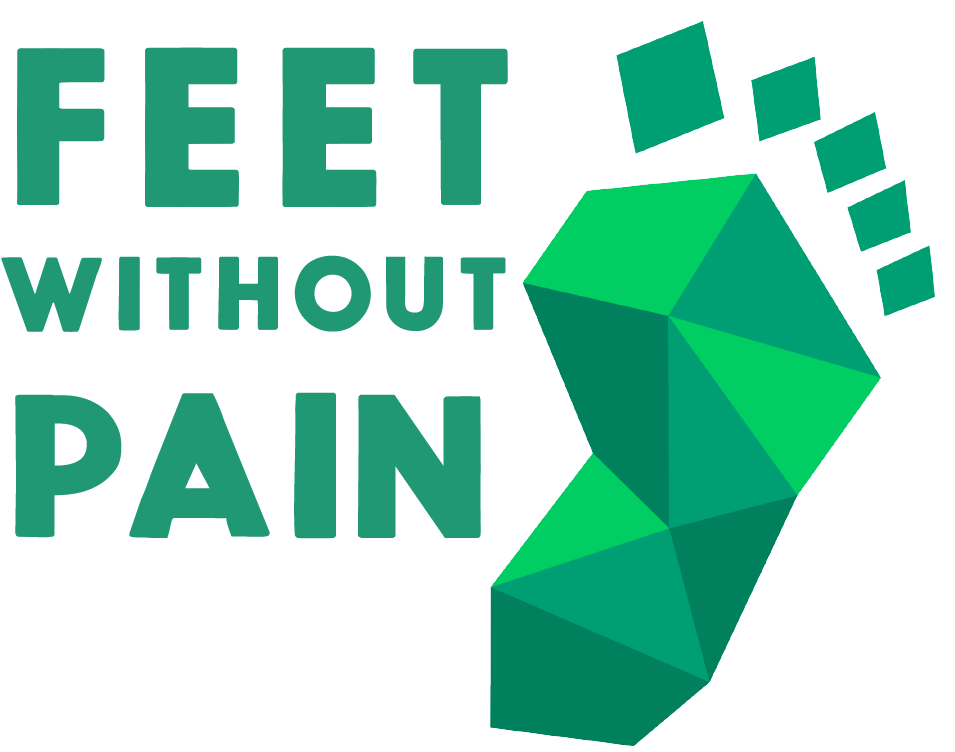Instep
Instep pain, or pain in the dorsal surface of the foot or midfoot, are synonyms. This region comprises bones, joints, arteries, nerves, ligaments, muscles, and tendons, so problems in any of these parts can cause pain.
CAUSES OF INSTEP PAIN
Most of the time, instep pain occurs when the tarsal bones meet the metatarsals, known as the Lisfranc area or the region close to the toes. They may be related to several factors, such as stress fractures, tendinitis, arthrosis, alterations, foot deformities, and local overload.
The habit of wearing very tight, narrow shoes, high heels, and high-impact physical activities are some of the main factors that cause pain in the instep, in addition to increasing the risks of becoming chronic pain.
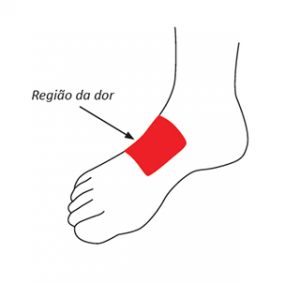
Alignment
Feet alignment and arch height can be pointed out as factors of instep pain when left untreated. This destabilization can alter the cushioning and distribution of body load, especially during physical activities. For example, in pes cavus, due to the curvature of the plantar arch being higher than ideal, the joints are locked and cannot slide between themselves, making it difficult to receive a load. Therefore, the pes cavus is usually more rigid and cannot efficiently absorb the impact, causing pain more often.
Rheumatoid arthritis
Rheumatoid arthritis is an autoimmune disease in which the individual’s immune system cells attack the soft tissues lining their joints. As a result, cartilage, bone, and ligaments can be damaged, leading to deformity, instability, and scarring within the joint. In the feet, joints are quickly affected due to day-to-day activities overload. Many factors, including genetic predisposition, can influence the pattern of disease. But, it is believed that wearing tight shoes, among other factors, can stimulate its manifestation.
Arthrosis
Osteoarthritis, also known as osteoarthritis, osteoarthritis, or degenerative arthritis, is a progressive disease. The abnormal cartilage wear occurs, which covers the junction region of two bones, protecting and facilitating joint movements. However, the cartilage and bone deterioration process causes the affected joint to become disabled because any activity is excruciating.
Osteoarthritis in the midfoot area is very common. It happens because the various joints in the region are constantly overloaded. Also, this disease can be a consequence of some other.
Traumatic fractures
Fractures in the midfoot joints, such as the Lisfranc Fracture, compromise the joints that enable gait stability. They are usually caused by direct trauma, which can lead to instep bone fractures and ligament injuries. These fractures can cause chronic instability of the midfoot joints and, consequently, arthrosis in the joints in the area.
Stress fractures
According to the research “Biomechanical Analysis of the Foot and Ankle for Predisposition to Developing Stress Fractures”, the stress reaction is the weakening followed by a response of the bone membrane. It is the consequence of repeated overload and not just the specific traumatic experience, which leads to bone weakening. In the case of the feet, it usually happens in the metatarsals, the bones connected to the toes. It is a minor fracture but causes enormous discomfort, especially on the instep. That’s because the bones in the region help with weight bearing. Therefore, constant overload and sudden activity increases are the main reasons for this fracture. It is widespread in athletes and runners, even though it is related to muscle weakness.
Osteochondritis
This pathology arises when a part of the bone and cartilage lacks blood support. Usually, the disease causes joint stiffness, pain, swelling, and deformity in the feet. However, when not treated correctly, it can cause early changes in joint structure and contribute to cartilage wear.
Tendinitis
Tendinitis is an inflammation of tissues (tendons and muscles, for example). It can attack the tendons along the top of the instep, such as the extensor digitorum and tibialis anterior. When the muscle contracts, the tendon is tensioned; if the tension is excessive and continuous, the tissue is “worn out”. If there is constant overload, the injury can cause degeneration and intensify inflammation, both in the tendons and the retinaculum – the structure that holds the tendons in the ideal position.
Although less common, high-intensity exercise such as running and walking on uneven surfaces can stress the muscles. Other factors such as excessive pronation, obesity, tight shoes, or muscle weakness can also lead to this.
FOOTWEAR AND INJURY ON THE INSTEP
Ordinary shoes are often the natural enemies of our feet. Since they are made in a standard size, their composition does not consider each foot’s characteristics. Sometimes too tight, occasionally uncomfortable, their use can cause a lot of pain and injuries. For the back region, using social models with a pointed toe or high heels tightens the area, consequently bringing complications.
Using high heel shoes in the most varied events of everyday life is widespread. However, because it is highly valued for aesthetics, well-being ends up being in the background, and, for this reason, shoes end up harming our feet. The pain, in this case, is more common when the heel is too high because the pressure placed on the foot is not balanced, and the back is overloaded.
Feet Without Pain conducted a survey to understand more about these shoes. In it, we can see that 10% of the 1,835 people interviewed feel pain in the dorsum of the foot when they wear heels. To solve this problem, the most suitable is custom insoles and shoes. Only they provide the pressure rebalancing and the real stability the feet need.
SIGNS AND SYMPTOMS
If there is instep pain, tingling, swelling, redness, or numbness, it is crucial to seek a healthcare professional. Some pathologies can start with a nuisance in the upper area of the foot and get worse over time. Others already start with pain strong enough to make the person unable to walk. However, the fact that this area hurts can be a warning for possible problems, such as stress fractures, tendinitis, and diseases that can be treated more effectively if identified early on.
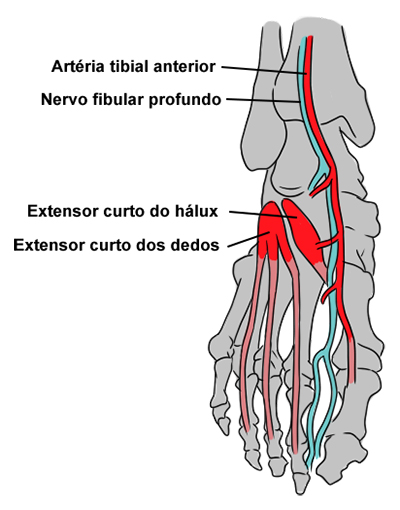
PREVENTION AND TREATMENT
To avoid pain, you need to take some care. It is important not to wear tight shoes and not to tie the laces too firmly; otherwise, you would be putting pressure on the instep, tendons, veins, and muscles in the area. Overloading the muscular system, as in training and intense and impactful physical activities, must be avoided. Two mandatory tips are protection (avoiding trauma and new injuries) and rest (reducing activities that cause pain). Elevating the foot and using ice packs can also help.
Instep pain may not be that complicated. However, a specialist must be consulted to ensure an accurate diagnosis. In cases of misalignment, a physical therapist can help improve symptoms.
FEET WITHOUT PAIN® CUSTOM INSOLES AND SHOES FOR INSTEP PAIN
Painless Feet custom insoles and shoes are essential to treat instep pain. Both provide realignment of the foot and support of the midfoot region, relieving and eliminating pain. In addition, they fit perfectly, providing greater comfort to those who use them.
The custom-made insole will support the foot arch to remove the overload from the instep area. In addition, in case of foot deviations, the insole promotes realignment, eliminating instep pain.
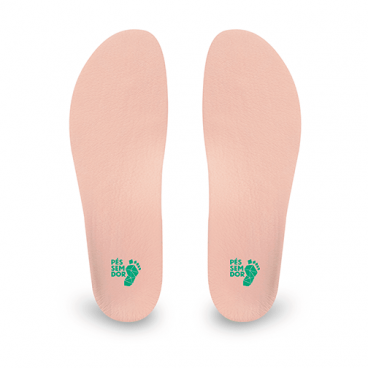
Tailor-made shoes are the exact width, circumference, and height of your foot, which means there is no pressure and discomfort in the instep area. It provides a perfect fit and support for your foot.
During the evaluation, the feet, ankles, and knees are analyzed and positioned aligned on the 3D scanner. This technological equipment comprises all foot measurements, including its length and width and the position and height of the plantar arch. The scanner finds the ideal alignment of the structure of each individual. Through optimal positioning and increased foot support, it is possible to lessen the load placed on bones, muscles, and tendons. See now all the benefits of custom insoles and shoes:
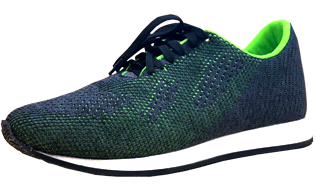
Unisex Sneakers Feet Without Pain | You can choose from over 20 men’s and women’s shoe models.
- Elimination or reduction of pain;
- Injury prevention;
- Increased comfort;
- Perfect fit;
- Standing longer without pain or discomfort;
- Prevention of pathologies progression;
- Improved impact absorption;
- Improved sports performance.
SPORTS
Breathing sport
The dorsal area of the foot is highly used by soccer players from all over the world. Kicking the ball, when done with the “instep”, can result in the great goals we see in the best championships in the world. For this reason, the instep is constantly worn out in training and games, causing discomfort.
In Brazilian football, there are some emblematic cases of instep injury. The most recent was with Rodrigo Caio in April 2018. The player suffered an injury diagnosed as ligament instability on the left foot’s instep. The athlete’s serious injury was essential to take him out of the cup in Russia. The sportsman’s case makes it clear how important it is to prevent.
The main suggestion is to practice warm-ups before any physical activity. Warming up is essential because it increases metabolism, muscle spindle responses, body temperature, and other factors. Therefore, warming up provides good preparation for activities and decreases the chances of injuries.
In the case of sports such as football and running, which wear out mainly through repetition, injuries usually occur due to micro trauma. They arise when the stress on the site is excessive because the body’s limit has been exceeded. The pains, after continuous exaggeration, are felt by the difficulty in walking and standing. It is typical for the instep area to be swollen and red.
The precise kick
Muay Thai is a martial art that originated in Thailand about two thousand years ago. The activity is the most popular in its home country and has international prominence. Much of this is due to the Ultimate Fighting Championship (UFC) – the most prominent fighting event in the world. As the show is well known, the use of this art by athletes boosted the practice of Muay Thai, and today it is common to see several gyms in Brazil that encourage this sport’s training.
For health, practicing Muay Thai is very important. This fight allows the athlete to work on the wrists, knees, elbows, shins, and feet. And, for feet, the instep area is relevant. The instep comes into direct contact with the opponent (in hand-to-hand combat, for example) and with the “punching bag” during solo training.
When constant and intense, this contact can cause traumatic injuries. The instep kick wears out the region due to the activity’s impact and repetition. In this regard, what is worth mentioning is respect for one’s limits. Having progressive training and using protections is always the most appropriate.
An injury from a macro trauma is worse than an injury caused by microtrauma. It happens when there is a powerful impact. Considering that all the force we exert on an object returns to us, a strong kick hitting the opponent’s knee – when he makes moves to defend – can cause a significant impact and lead to a severe injury. These situations put the athlete at risk. As much as a shock is part of many sports, especially Muay Thai, avoiding any problem involving the athlete’s physical integrity is fundamental.
INSTEP PAIN: HOME TREATMENT
Ice Application: Ice helps reduce pain quickly and effectively. The application must be kept on the site for 15 to 20 minutes. Due to its analgesic and anti-inflammatory nature, ice is recommended when pain and temperature increase in the region. Post-training pains can also be alleviated with this technique;
Anti-inflammatory: drugs should only be used under medical prescription, which will help control inflammation and pain;
Anti-inflammatory spray: they act more locally and have the power to relieve pain in the injured area momentarily;
Massage: massaging the region can improve blood flow and relax local muscles. A tennis ball can be used to rub, or your hands glide over the area. Essential oils can be used to improve the feeling of comfort;
Exercises: strengthen the structures of the foot, providing more stability and cushioning capacity, essential for the proper instep functioning. See below:
– For finger muscles
Place a thin towel on the floor and try to pick it up with your toes. Remember to keep your heels supported. Do 10 to 15 repetitions, 3 to 4 times a week;
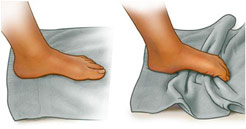
– For tibialis anterior and finger extensors
Attach an exercise band somewhere low. Pass the other end of the elastic over the region between the toes and the midfoot. Move to bring the top of the foot against the shin. Return slowly to the starting position. Perform 3 sets of 15 repetitions once a day.
FREQUENTLY ASKED QUESTIONS (FAQs)

How to purchase your custom shoe or insole?
It’s fast and easy! Schedule a free evaluation of your feet with our specialists to buy your custom-made shoe.
Call, send a message to WhatsApp at 4003-8883, or visit: www.pessemdor.com.br/agendamento.
How does the evaluation work?
Upon arriving at a Feet Without Pain branch office, you will be received by a foot, ankle, and knee specialist, who will then fill out a registration form and ask some questions about your pain. Next, the assessment of the feet begins.
The specialist will examine your feet to understand your foot pains and complaints. Then, using the high-precision 3D scanner device, the specialist captures your feet’ measurements.
We are the only company with a 3D scanner for designing custom shoes. First, with the measurements of your feet, a mold is created using 3D printers, and after that, we start making your shoe.
How long does it take for the shoes and insoles to be ready?
Feet Without Pain produces custom-made shoes in up to 3 days; then, they are sent to your home free of charge!
Is the evaluation free?
Our assessment is completely free! We perform a complete analysis of your feet and legs, and you pay nothing for it!
Do we accept medical insurance?
We do not work with insurance because our assessment is completely free! But you can check if your plan somehow refunds you regarding the shoes!
EXTERNAL LINKS
1) Pain on top of foot | Foot Pain Explored
2) Why Do I Have Pain on Top of My Foot? | Healthline
3) Why does the top of my foot hurt? | Medical News Today
4) Biomechanical analysis of the foot and ankle for predisposition to developing stress fractures | NCBI
